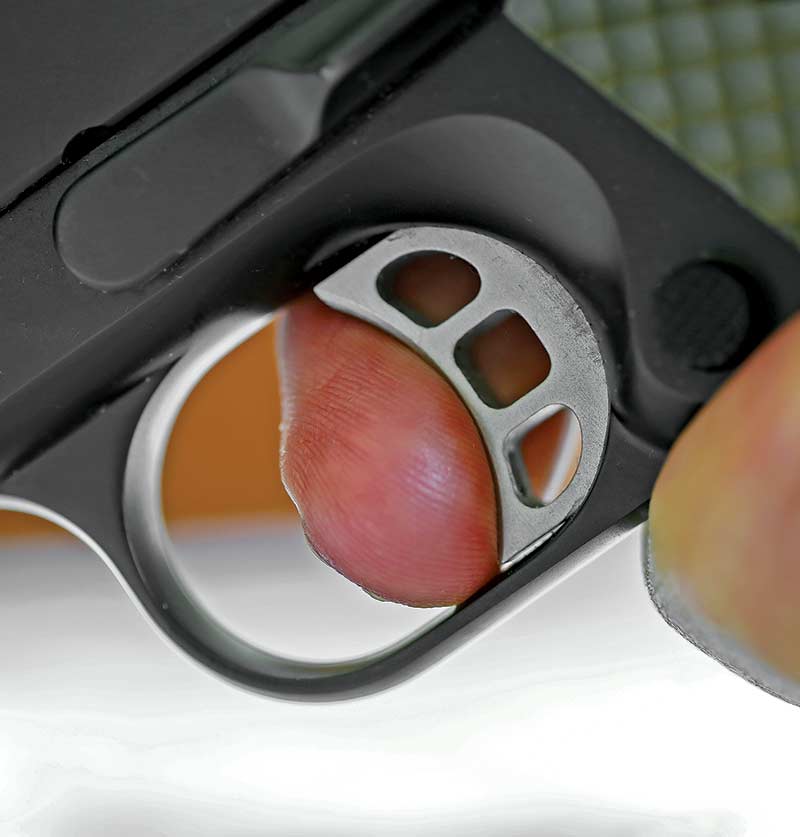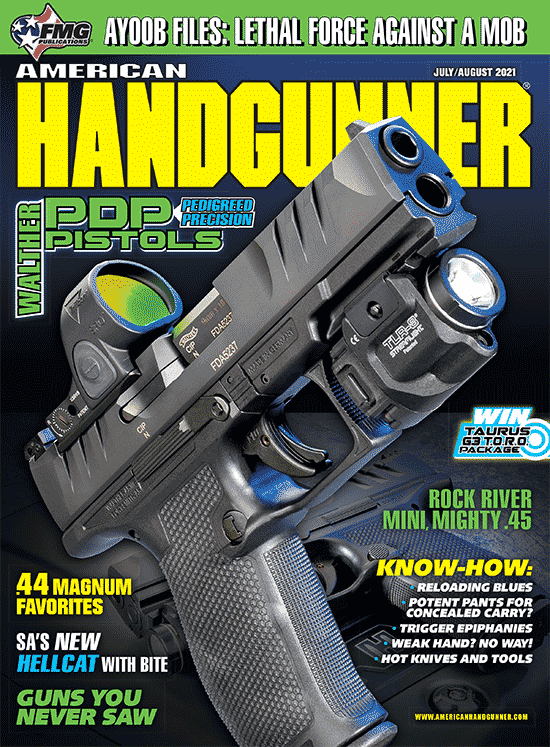How to make Sure a Pistol ‘Fits’ You
When a novice asks for advice on purchasing a first handgun, a popular suggestion is to try various handguns and find one that “feels right.” The problem is a novice doesn’t know how a handgun should feel and is probably looking for a bit more help.
The human hand is a marvelous device and highly adaptable, and an experienced shooter can do a creditable job with most any size handgun, from a tiny Browning .25 ACP to a huge Desert Eagle .50. For the new shooter, it’s helpful to choose a gun making the process easier. Think medium. Medium size, medium weight, medium recoil.
Put Your Fingers To Work
The grip frame should be long enough to accommodate all three of the fingers holding the gun. I don’t like having the pinkie finger dangling below the grip. If the grip is just a bit short for your hand and the gun otherwise suits you, a solution may be a thick base pad on the magazine, or even a spur extension.
Circumference
Grip circumference may be the single most important factor. To see how well a pistol fits your hand, try this: Pick up the pistol with the non-shooting hand and seat it in the shooting hand, the grip tang pressed firmly against the web of the hand, the barrel about aligned with the forearm. Now check the position of the bottom three fingers. What works for me (right hander) is if the tip of the middle finger extends at least 1/4, but no more than 1/2, of the width of the left grip panel.
Some high-cap designs with thicker grip panels are borderline too big even for my somewhat larger than average hands. An innovation of which I highly approve is to eliminate grip panels entirely, as with GLOCK pistols and current designs from S&W, Springfield Armory, SIG, CZ, Walther and others. If you have average or smaller hands, one of these may let you have the advantages of a double stack magazine in a pistol, you can grip securely. If these are still too large, many of these makers offer single-stack magazine versions with a slimmer grip.
Trigger Reach
You should be able to place the trigger finger squarely across the face of the trigger so it can be pressed straight back without imparting any sideways pressure. If the grip circumference works for you, most likely you can adjust trigger finger position a bit to make it work. If not, you may need to fit a replacement trigger (easy with 1911-style pistols, impossible with many other models) or try a different pistol.
Trigger reach varies with which part of the trigger finger engages it. Personally, I like to center the pad of the finger across the face of the trigger. Some prefer the finger extending a bit farther, even as far as the first joint past the fingertip. Go with what works for you as long as you’re pressing the trigger straight back with no sideways pressure.
Grip Angle
Some shooters prefer the “1911” grip angle with the wrist in a fairly neutral, centered position. Others insist it is more consistent to have the wrist canted fully forward with a more slanted grip, such as the GLOCK or Ruger .22 pistol. I think either works. I shoot 1911s more than anything else, but I also shoot slant-grip designs such as my Colt Woodsman or GLOCK pistols, just not quite as quickly. As a general rule, I think it best to select a style and stay with it.
Balance
Balance can be a bit tricky as a loaded high-capacity magazine changes weight distribution — and it changes as the magazine empties. I like the pistol to balance slightly toward the muzzle. I don’t care for muzzle-light pistols — or rifles, for that matter. I think most novices won’t notice balance until they have acquired some shooting experience and skill. Sometimes accessories, like Tungsten rods, are available to let the shooter alter balance.
Start with getting all three-bottom fingers on the grip, extending far enough around the grip frame to give a solid hold. Get this right and you’ll have a good start on becoming a competent handgunner.







